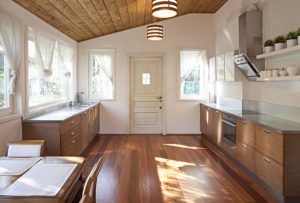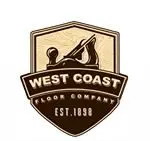Hardwood floors are a beautiful addition to any home, but like most things in life, hardwood floors need to be maintained and refinished periodically to restore them to their former glory. This article will give you an idea of what you can expect when you have hardwood floors installed in your home.
When hardwood floors are first installed they should be completely free of any visible damage, scuffs, scratches, or cracks. But over time, you will see signs of wear and tear – no matter how careful you are.
Here are the 13 Most Common Hardwood Flooring Issues as originally posted here
Wear and Tear
Wood floors have a protective finish that helps them withstand ample abuse from pets, furniture, kids, and more. Over time, though, this finish will begin to wear off. As it does, you can expect your wood floors to show signs of everyday wear and tear, such as scratches, dings, and dents. You may also notice worn spots that could be caused by high traffic or by a subpar finishing job. Using protective pads under furniture and leaving your shoes at the door can help protect your floors.
Pet Stains
Although wood floors are fairly stain-resistant, they’re not invincible. Water spills and pet accidents that are left unnoticed for too long will leave a mark. Pet stains, in particular, have a tendency to soak through the finish and into the wood fibers. Unlike surface stains, which can be removed with a wood-floor cleaner, stains in the finish must be sanded out. The deepest stains may even require you to use wood bleach or to replace the affected boards.
Sun Fading

Some types of wood are more photosensitive than others, which means they are more likely to be affected by exposure to sunlight. Due to photosensitivity, wood floors may fade and change color over time. A high-quality finish can help delay this process, but if you’re worried about fading, installing blinds to limit sun exposure is also a good idea.
Peeling Finish
Although all finishes will eventually show signs of wear, subpar or improperly applied finishes will deteriorate much sooner. If your finish starts to peel off in places, that’s a sure sign that something went wrong during application — and you’ll probably have to sand everything down and start again. Typically, a peeling finish indicates that dirt or chemicals, such as stain residue, were not removed before applying the stain. These contaminants prevent the wood from holding its finish.
Wide Gaps

A little separation between boards is fine, but abnormally wide gaps typically indicate improper installation. Wood expands during humid weather and contracts during dry periods, so any gaps in your floors will appear larger during some seasons than others. If boards were excessively wet during installation, the gaps between them will be wider when they dry, causing a cosmetic issue.
Cupped Edges
Cupping is a form of water damage. Cupped boards are those whose edges are raised higher than their center. This can happen when wood flooring is installed over a wet subfloor, but high relative humidity can also be the cause. Sometimes floors will flatten out as the excess moisture evaporates, but other cases require sanding.
Crowning Edges
Crowning is the inverse of cupping, with the center of a board lifting higher than its edges. Where cupping often results from moisture beneath the boards, crowning tends to happen when water is left sitting on top of the boards. Crowning can also happen when cupped floors are sanded before the moisture is addressed.
Buckling Boards

Buckling is the third and most extreme way that wood flooring may react to moisture. When a floor buckles, the boards lift up several inches. Buckling most often results from flooding, but other moisture problems can also cause buckling if the boards were installed too close together and don’t have room to expand, or if the boards were improperly fastened to the floor.
Irregular Boards
The contrasting colors of a wood’s grain give your flooring its distinctive look. This variation results from the tree’s growth rings, with the darker spots being soft springwood and the lighter areas being dense latewood. Springwood is less durable than latewood, which means your floor may not wear evenly. Over time, darker areas may look much more worn or dented than the light spots. Irregular boards can also be caused by improper sanding tools or techniques.
Scratches From Sanding
Speaking of sanding, you may also notice scratches in your wood flooring that result from improper sanding. These blemishes can be introduced when worn sanding pads or abrasive screens are used to sand the boards between layers of finish. Scratches like these can only be removed by sanding past the layer where they were formed and by refinishing.
Cracks From Nails
The concentrated force of a flooring nailer can cause unsightly cracking, especially on factory-finished floors. Some wood species are more prone to cracking than others, and cracking can happen simply because boards dried too quickly. However, nails are the most common culprit. Fortunately, many cracks can be easily fixed with wood filler.
Debris in the Finish
Just as scratches can be introduced during the sanding and finishing process, debris can also find its way into the finish. Any pieces of hair, dirt, or other contaminants not removed before finishing — or that come in contact with the finish as it dries — can become a permanent part of the finish. The only way to remove the debris is to resand and refinish.
Polyurethane Droplets
If you finish your floors during a change of seasons, uncured polyurethane can seep between the cracks as the boards contract. Later, as the boards expand and force the poly back to the surface, you may notice drops of polyurethane forming along the edges of your floorboards. If you catch them in time, poly drops can be removed easily with a razor blade, a rag, and a cleaning solution.
What Are the Steps to Hardwood Floor Refinishing?
Although there are several ways of refinishing hardwood floors, here are the most common steps a refinishing contractor will take to restore the hardwood floor to its former self.
Step 1: Prepare the Hardwood Floor for Refinishing
Step 2: Rough-Sand the Floor to Remove Top Coating
Step 3: Sand the Edges and Corners
Step 4: Screen Sand the Floor
Step 5: Make Necessary Repairs – fill in gaps with wood filler, replace planks too severely damaged
Step 6: Carefully Remove All Dust
Step 7: Apply the Wood Stain
Step 8: Apply the Finish
How Long Does It Take?
Depending on the size of the room it can take from a couple of days to a week – not counting curation time. It usually takes around a day just to sand the entire floor to remove the top finish and any nicks and dents. Figure another day or so for making the necessary repairs and re-stain the floor. Once the stain has had a chance to dry the flooring professional will return to remove all dust and debris and to apply at least 2 layers of the protective top coating.
How Long Do You Have to Stay off the Floor After Refinishing?
Depending on what type of top coating is used it may take up to 30 days for it to cure.
How Much Should I Pay to Have My Wood Floors Refinished?
Well, that depends on the size and scope of the project. Nationally, the average cost for refinishing a hardwood floor is in the range of $1,074 to $2,400. But given the alternative of the cost of replacement, it’s a steal. Most wood flooring problems can be avoided with proper installation, finishing, and maintenance, and when they do occur, most problems are very fixable. Except in cases of severe damage, the original boards can usually be repaired and reused without needing to be replaced.
In Closing,
Hardwood floor refinishing is a task that you could consider tackling yourself but why would you? It takes the proper tools, equipment, and know-how to get the job right. By the time you figure in the cost of equipment rental, the purchase of materials, and your time you will agree that hiring a contractor is the way to go. Especially, if you want it done right and want it done fast. If you would like to get an estimate or want to schedule a visit to our Napa Showroom – open by appointment only – please call West Coast Floor Company at (707) 297-2476.
